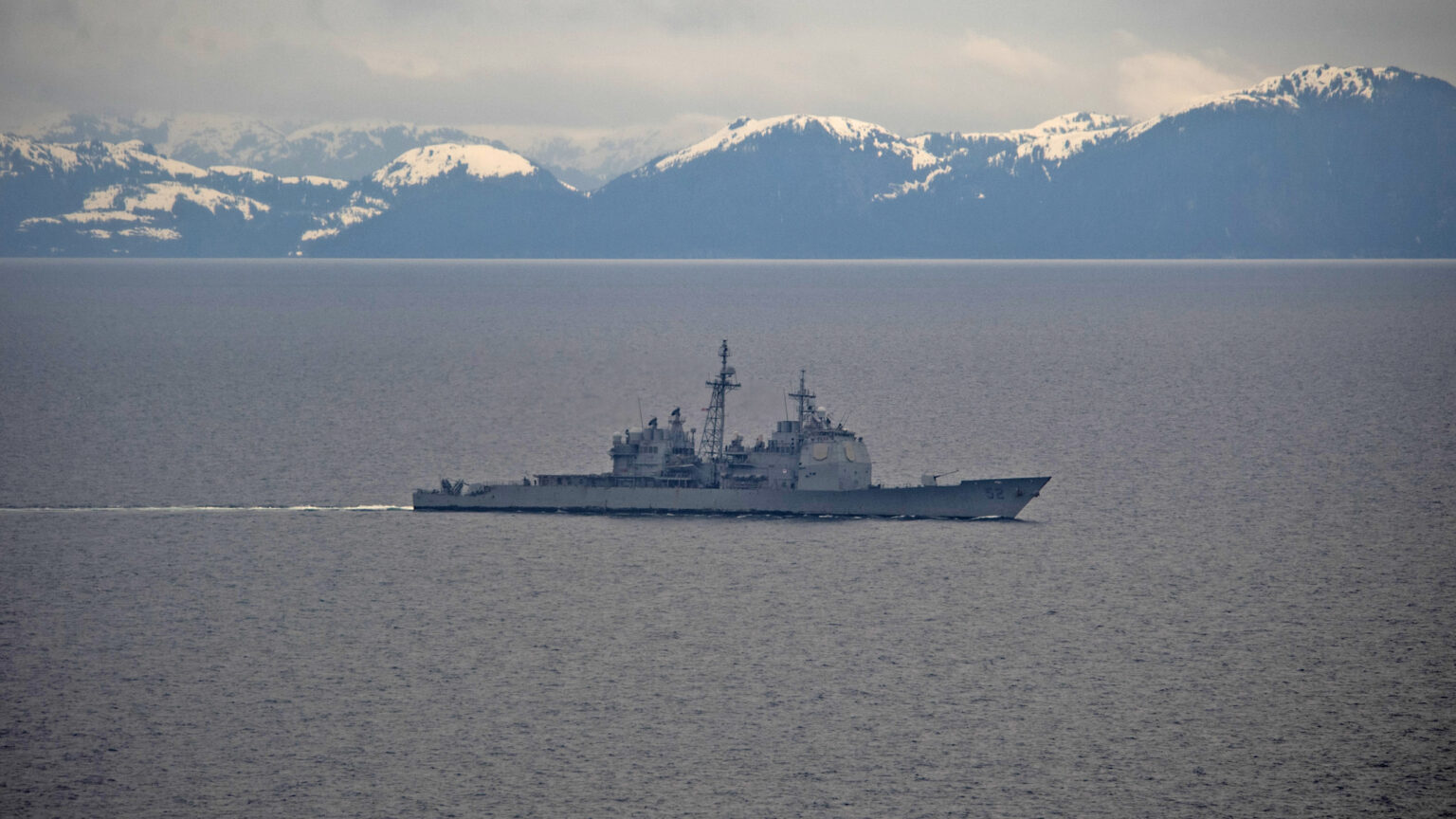
The Ticonderoga-class guided-missile cruiser USS Bunker Hill (CG 52) transits the Gulf of Alaska as part of the Theodore Roosevelt Carrier Strike Group, May 8, 2021, in support of flight operations above the Joint Pacific Alaska Range Complex and Gulf of Alaska during Exercise Northern Edge 2021 (NE21). Navy, Air Force and Marine aircraft executed flight missions during NE21 demonstrating seamless, joint combat capabilities. Approximately 15,000 U.S. service members are participating in a joint training exercise hosted by U.S. Pacific Air Forces May 3-14, 2021, on and above the Joint Pacific Alaska Range Complex, the Gulf of Alaska, and temporary maritime activities area. NE21 is one in a series of U.S. Indo-Pacific Command exercises designed to sharpen the joint forces' skills; to practice tactics, techniques, and procedures; to improve command, control, and communication relationships; and to develop cooperative plans and programs. (U.S. Navy photo by Mass Communication Specialist Seaman Dylan Lavin)
Lockheed Martin aims to maintain global operational status of SPY-1 radar until 2060.
The SPY-1 radar, which became operational in the 1970s, is utilized by the US Navy and the naval forces of Australia, Japan, Norway, Spain, and South Korea. The Ticonderoga-class guided-missile…


